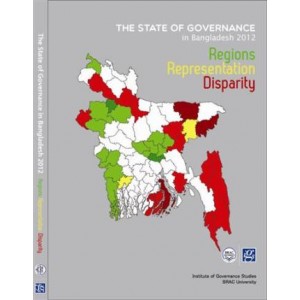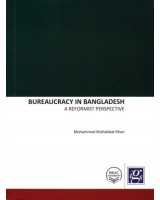Shopping Cart
0 item(s) - U$0.00- Agriculture +
- Anthropology
- Archaeology
- Arts & Photography +
- Bangladesh Studies
- Bengali Books
- Biographies & Memoirs +
- Business, Economics & Investing +
- Children's Books
- Development Studies
- Education & Reference +
- History +
- Home, Garden & Hobbies +
- Journals & Reports
- Law +
- Literature & Fiction +
- Population and Housing Census
- Reference Book +
- Religion & Spirituality +
- Sciences & Technology +
- Social Sciences +
- Travel +
- Women's Studies
- Statistics
The State of Governance in Bangladesh 2012: Regions, Representation, Disparity
Authors: Institute of Governance Studies (Author)
Edition: 1st edition
ISBN: 9789843379702
Page: 196
Format: Paperback
Language: English
Publication Date: September 1, 2013
Product Code: 4933
Availability: In Stock
Condition: New Book, Never used
Qty:
Since 2006 the Institute of Governance Studies (IGS), BRAC University has been annually publishing The State of Governance in Bangladesh (SOG) report. It is the flagship research publication of the Institute and attempts to examine the nature and various forms of governance in Bangladesh. So far, five SOG reports
have been released and this is the sixth issue in the series.
The first three reports of SOG (2006, 2007, and 2008) focused on the institutions and politics of Bangladesh from a governance perspective while the fourth Report (2009) undertook a sectoral analysis of food security, energy, digital Bangladesh, and labour migration. The fifth Report (2010-2011) critically analyzed the role and influence of external stakeholders in shaping the country's socio-political policy domain and its effect on the overall governance in Bangladesh. The sixth Report is a departure from all previous reports from a thematic as well as methodological perspective and adopted an indicator-based approach in measuring some key governance dimensions. IGS has been working to develop innovative governance indicators to present a quantitative assessment of governance in Bangladesh for quite some time. The idea was to complement the qualitative assessment of governance in an attempt to enrich the public discourse and deepen the analysis of governance issues in Bangladesh. The 2012 Report has a reflection of that tedious effort.
The Report offers four governance indicators to capture the geographical variation of governance. Such an exercise can provide some useful cues in setting standards for improvement as well as indicate where funds could be used more effectively (Besancon 2003). In other words it can serve as a more effective guide to public policy in improving governance. Global institutions like World Bank, Transparency International and others have produced indicators measuring multiple dimensions of governance in cross-country settings. However, those indicators were not explicitly meant to address sub-national variations in governance. IGS has long felt the need to bridge this gap and produce indicators to address sub-national issues by tracking and monitoring specific changes in certain aspects of governance. A further rationale for preparing such indicators by IGS is that almost all other global governance indicators are created based on expert opinions which may be subjective in nature. The indicators of SOG 2012 cautiously avoided that approach and are based on objectively verifiable officially generated secondary data. Though collecting the large data set proved to be a challenging task, the generous support of public officials concerned coupled with the arduous efforts of the IGS researchers made this research possible.
The exercise is the first of its kind in the governance discourse of Bangladesh. We are aware that shortcomings remains in the methodological approach followed in the SOG report. We take full responsibility for any shortcomings in the analysis of data and wish to invite your comments and feedback to improve these indicators, which at this stage remain a work in progress.
Write a review
Your Name:Your Review: Note: HTML is not translated!
Rating: Bad Good
Enter the code in the box below:
Do you have any questions about The State of Governance in Bangladesh 2012: Regions, Representation, Disparity?
 Your Name:
Your Name: Your Email:
Your Email: Your Question:
Your Question:
Enter the code in the box below:


 (
(